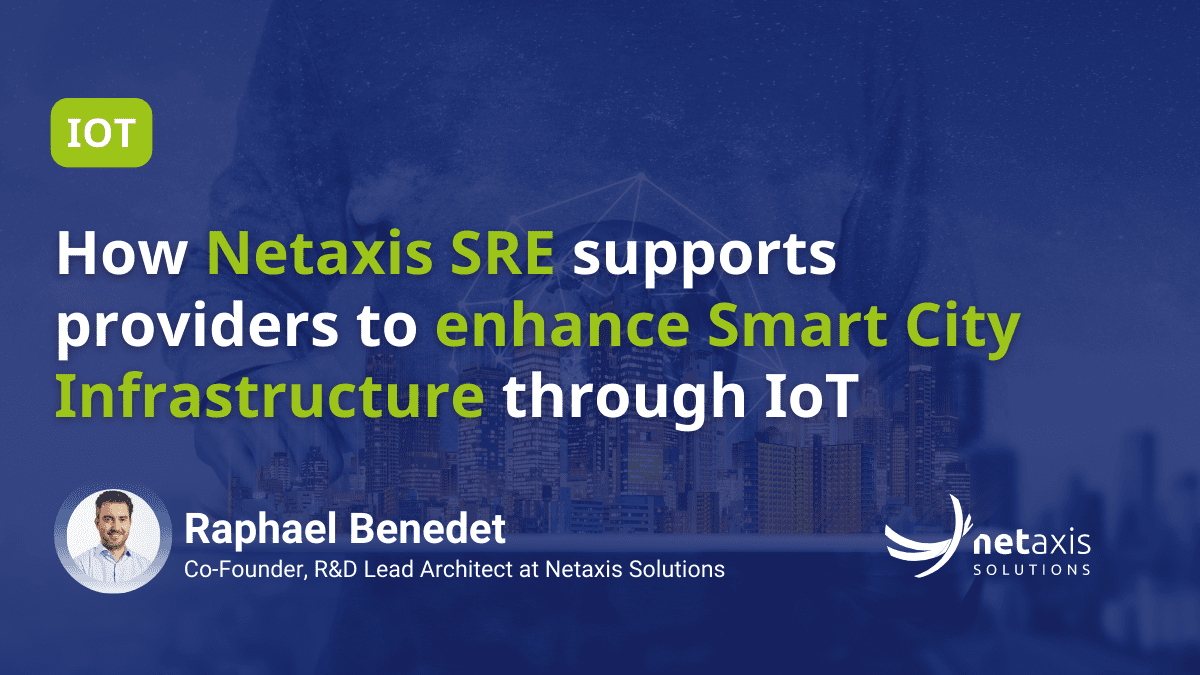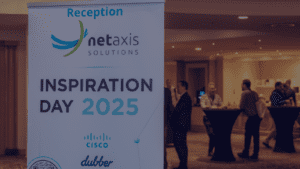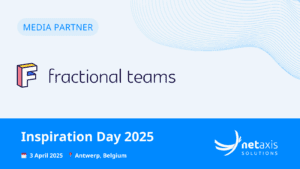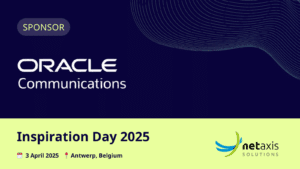As the world embraces the Internet of Things the Communications industry has a great deal to offer. With growing complexity in the network the IoT is today at a stage comparable with that of what was an emerging VoIP market. Telcos in those days managed this complexity with the development of powerful and highly functional routing capabilities. The Communications Provider of today is able to repurpose some of these capabilities to simplify life and vastly improve the usefulness of the IoT.
This article looks at a potential IoT Use Case and describes how the Netaxis Session Routing Engine SRE can dramatically help.
Table of Contents
A potential IoT use case: Smart city infrastructure and resource management with population density awareness

Within a smart city infrastructure, a multitude of IoT devices are deployed at various locations, effectively contributing to enhanced resource management and overall quality of life. In this scenario, let’s imagine three types of IoT devices:
temperature sensors in buildings of different suppliers,
inventory sensors in vending machines,
and traffic monitoring devices on roads.
Additionally, we’ll include mobile location services to estimate the number of people in different buildings, providing valuable data to manage resources more efficiently.
How IoT devices work in smart cities
Temperature sensors in buildings and population density analysis
These IoT devices continually monitor the indoor temperature of buildings. Different monitoring applications exist in the different buildings. On an unusually hot day, the temperature sensors detect the increase in real-time. Simultaneously, mobile location services estimate the number of people in each building, revealing that some buildings are densely populated, while others have fewer people. This real-time data is sent to a centralised management system, which not only triggers the air conditioning systems in the buildings accordingly but also adjusts the cooling intensity based on the number of occupants, ensuring optimum energy usage and comfort.
Inventory sensors in vending machines
IoT sensors in vending machines keep a watchful eye on stock levels. Due to the hot day, cold beverages are in high demand, leading to a rapid depletion of stock in several machines. The inventory sensors communicate this real-time information to the central management system. The system promptly alerts the vending machine company, triggering a restocking process. The supply chain response is adjusted based on the number of people in the vicinity, prioritising restocking in areas with more people.
Traffic monitoring devices on roads
IoT devices installed on roads monitor traffic conditions and detect any unusual activity. On this day, unexpected roadworks causes a traffic jam. This information is instantaneously sent to the central management system. An intervention is initiated: the city’s traffic management and navigation services are integrated to reroute traffic efficiently, thereby reducing congestion.
In this scenario, the interconnected network of IoT devices and mobile location services works in tandem, collecting invaluable data, and communicating with each other and the central management system. Such a setup facilitates swift, effective responses to changing circumstances based on real-time population density data. It exemplifies the transformative potential of IoT for smart cities, rendering them more efficient, sustainable, and responsive to the dynamic needs of their residents.
IoT solution recovery: The resilience of smart city infrastructure
In an unexpected turn of events, the combined IoT solution suffers a temporary system outage. The central management system, designed for such contingencies, immediately kicks into action.
For the vending machine restocking driver, the system sends an SMS detailing the top three most occupied locations based on the most recent available data. This enables the driver to continue restocking vending machines in high-demand areas, ensuring that services remain uninterrupted despite the system outage.
Simultaneously, an alert is sent to the operations team, informing them about the system downtime and the need for a server reset. The team is provided with all necessary information, including server status reports and error logs, to facilitate a swift recovery.
These automated fallback procedures highlight the resilience of the smart city infrastructure. Even in the face of system downtime, essential services continue to operate efficiently, minimising disruption for city residents. This resilience also underscores the importance of having contingency plans in place when deploying IoT solutions, allowing the city to maintain its commitment to providing a high-quality, responsive living environment for its inhabitants.
The role of telecoms service providers in smart cities
Telecoms can play an important role in this imaginary use case by bridging multiple IOT platforms and breakout to the existing telecoms networks. This use case requires complex setups. Here Netaxis SRE can play a pivotal role.
Transition to the future of IoT service routing with Netaxis SRE
Navigating the intricacies of IoT demands innovative, robust solutions. Managing the data stream within a multi-cloud, multi-vendor network can pose formidable challenges. The solution is the Netaxis Session Routing Engine (SRE) – a platform that revolutionises the way you manage voice and non-voice sessions, centralising control, simplifying processes, and enhancing efficiency in your network operations.
Explore the key benefits of Netaxis SRE for IoT service routing
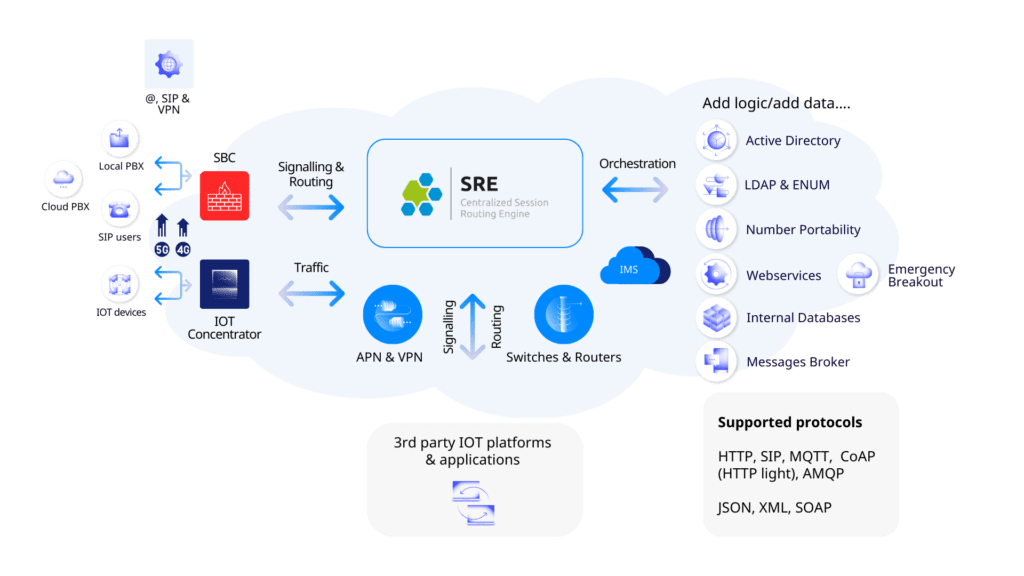
Unified management of IoT communications
Fast-track your service deployment with our user-friendly “drag and drop” service logic builder, enabling you to design and launch IoT products and services faster, more efficiently, and with total control.
Seamless integration and customization
SRE is designed to integrate seamlessly with IoT concentrators through APIs. Develop custom routing logic, data structures, and reporting capabilities tailored to your specific needs. This flexibility extends to integration with both internal and external databases and web services, thus facilitating a truly connected and responsive IoT environment.
Streamlined routing and IoT concentrator management
Simplify and automate your routing decisions, IoT concentrator management, platform integration, and IoT service creation. The SRE handles complex tasks such as device connectivity management, data routing for various IoT use case implementations, and customer enablement, leaving you free to focus on innovation.
Rapid implementation and enhanced control
Supercharge your operations with accelerated implementation cycles thanks to our user-friendly service logic builder. SRE empowers operators to take ownership of their networks and deliver IoT services more swiftly and efficiently.
Optimised operations and reduced complexity
Experience the benefits of centralised control. The SRE minimises complexity, streamlines operations, and cuts operational costs. Furthermore, by centralising operations, the chances of human error are significantly reduced, resulting in improved service quality.
Scalability and resilience
Designed with scalability at its core, the SRE can manage thousands of simultaneous IoT sessions or calls. This ensures your network will remain robust and reliable as your IoT service offering expands. Redundancy is a key design principle, guaranteeing continuous service availability, even under peak demand.
Conclusion: Embrace the future of IoT service routing with Netaxis SRE
The Netaxis Session Routing Engine is your solution to the challenges of managing IoT traffic. It empowers you to centralise control, simplify processes, and expedite the delivery of IoT services. With reduced operational complexity, faster implementation cycles, and the ability to self-manage, you are free to focus on innovating and delivering high-quality IoT services. Embrace the future of IoT service routing with Netaxis SRE.


